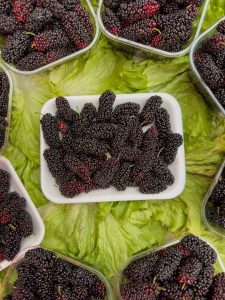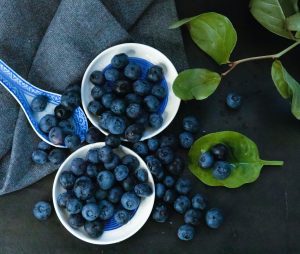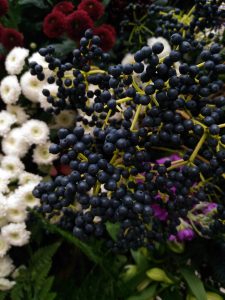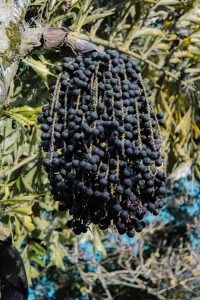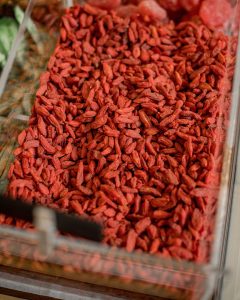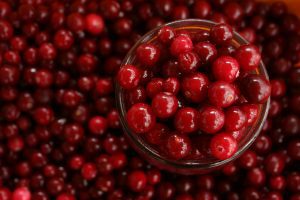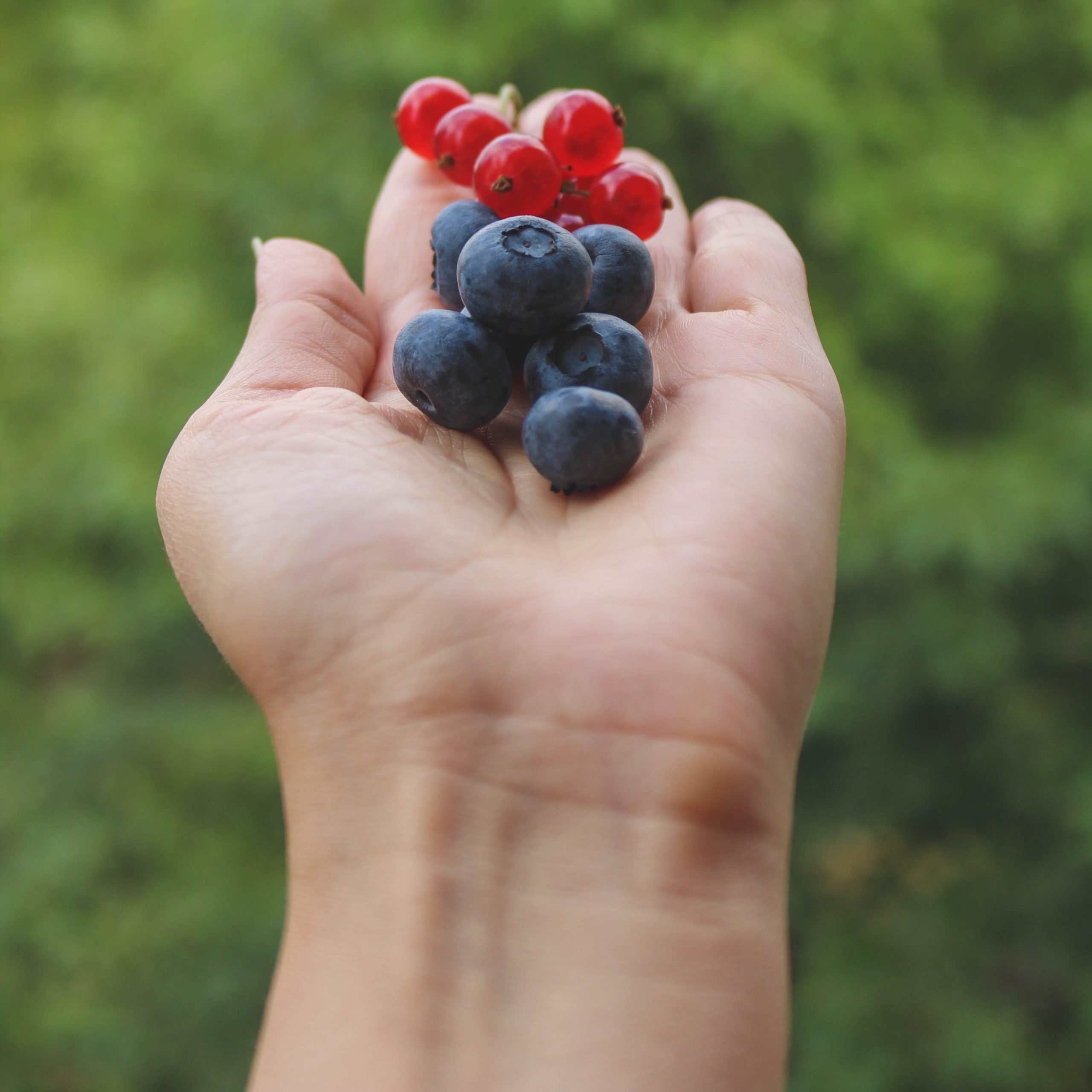
What are Currants?
Currants are small, vibrant berries that belong to the Ribes genus and come in various colors, including red, black, and white. These berries are known for their rich flavor, striking color, and versatility in culinary applications.
Red currants are tart and slightly sweet, making them popular in jams, jellies, and desserts. Black currants have a more intense flavor, often used in juices, jams, and even wines. White currants, a variant of the red, are sweeter and milder.
In addition to their delightful taste, currants are packed with nutrients. They are a rich source of vitamin C, providing antioxidant benefits that support the immune system. Currants also contain essential minerals, fiber, and various phytochemicals.
Grown in clusters on deciduous shrubs, currants thrive in cooler climates. They are enjoyed fresh during the summer months or processed into various products for year-round use. Whether enjoyed as a snack, incorporated into desserts, or used in savory dishes, currants bring a burst of flavor and nutritional goodness to a wide range of culinary delights.
When Do We Eat Currants?
The timing of consuming currants depends on personal preferences, culinary uses, and regional availability. Here are some common occasions and times when people often eat currants:
- Fresh Snacking:
- Fresh currants are typically in season during the summer months. Many people enjoy them as a refreshing and nutritious snack, popping them directly into their mouths.
- In Desserts:
- Currants are commonly used in desserts such as pies, tarts, muffins, and cakes. The sweet and tart flavor of currants adds a delightful element to a variety of baked goods.
- Breakfast:
- Currants, either fresh or dried, can be added to breakfast dishes like oatmeal, cereal, yogurt, or pancakes. They contribute natural sweetness and enhance the nutritional profile of morning meals.
- In Salads:
- Both fresh and dried currants are used to add flavor and a burst of color to salads. They pair well with greens, nuts, cheeses, and vinaigrettes.
- Preserves and Jams:
- Currants are often used to make preserves, jams, and jellies. These can be enjoyed throughout the year and spread on toast, pastries, or used as toppings for desserts.
- Cooking:
- Currants, especially dried ones, are used in savory dishes. They can be included in sauces, chutneys, and marinades for meats, adding a unique sweet and tangy element.
- Holiday Dishes:
- Currants are frequently incorporated into holiday recipes. For example, they may be used in stuffing for poultry, added to Christmas puddings, or used in festive desserts.
- Beverages:
- Currants, especially black currants, are used to make juices, syrups, and even wines. These beverages are enjoyed on various occasions.
It’s important to note that the availability of fresh currants may vary by region and season. Dried currants and currant-based products are more readily available throughout the year. Ultimately, the timing of eating currants is flexible and can be tailored to individual preferences and the culinary context.
Health Benefits
Currants, whether red, black, or white, offer various health benefits due to their rich nutritional profile. Here are some potential health benefits associated with consuming currants:
- Rich in Antioxidants:
- Currants are packed with antioxidants, including vitamin C, quercetin, and anthocyanins. These compounds help combat oxidative stress, reduce inflammation, and protect cells from damage.
- Boost Immune Function:
- The high vitamin C content in currants supports immune function. Adequate vitamin C is essential for the production of white blood cells and the overall health of the immune system.
- Heart Health:
- The fiber, potassium, and anthocyanins in currants contribute to cardiovascular health. These elements may help lower blood pressure, reduce cholesterol levels, and support overall heart function.
- Anti-Inflammatory Properties:
- The antioxidants found in currants have anti-inflammatory properties, potentially reducing inflammation throughout the body. Chronic inflammation is linked to various health issues, including heart disease and arthritis.
- Improved Digestive Health:
- Currants are a good source of dietary fiber, which aids in digestion and helps prevent constipation. Fiber also promotes a healthy gut microbiota.
- Eye Health:
- The presence of certain antioxidants, such as lutein and zeaxanthin, in currants may contribute to eye health by protecting against age-related macular degeneration (AMD) and cataracts.
- Bone Health:
- Currants contain minerals like calcium and manganese, which are important for maintaining strong and healthy bones. These minerals play a role in bone formation and density.
- Blood Sugar Regulation:
- The fiber content in currants may help regulate blood sugar levels, making them a good option for individuals managing diabetes or those aiming to prevent insulin resistance.
- Weight Management:
- The fiber in currants contributes to a feeling of fullness, potentially aiding in weight management by reducing overall calorie intake.
- Skin Health:
- Antioxidants like vitamin C contribute to skin health by promoting collagen production, reducing signs of aging, and protecting the skin from damage caused by free radicals.
It’s important to note that while currants offer these potential health benefits, an overall balanced and varied diet, along with a healthy lifestyle, is crucial for optimal well-being. Always consult with a healthcare professional for personalized dietary advice, especially if you have specific health conditions or concerns.
Nutritional Value
Currants, whether red, black, or white, offer a range of essential nutrients, making them a nutritious addition to a balanced diet. Here is an overview of the nutritional value of currants per 100 grams:
Red Currants:
- Calories: 56 kcal
- Water: 80%
- Protein: 1.4 g
- Carbohydrates: 13.8 g
- Sugars: 8.2 g
- Dietary Fiber: 3.5 g
- Fat: 0.2 g
- Vitamin C: 41 mg (68% of the Daily Value)
- Vitamin K: 5.8 µg (7% of the Daily Value)
- Vitamin A: 33 IU (1% of the Daily Value)
- Calcium: 33 mg (3% of the Daily Value)
- Iron: 1 mg (6% of the Daily Value)
- Magnesium: 13 mg (3% of the Daily Value)
- Potassium: 275 mg (6% of the Daily Value)
Black Currants:
- Calories: 63 kcal
- Water: 82%
- Protein: 1.6 g
- Carbohydrates: 15.4 g
- Sugars: 8 g
- Dietary Fiber: 5.3 g
- Fat: 0.4 g
- Vitamin C: 181 mg (302% of the Daily Value)
- Vitamin K: 5.7 µg (7% of the Daily Value)
- Vitamin A: 0 IU
- Calcium: 55 mg (5% of the Daily Value)
- Iron: 1.5 mg (8% of the Daily Value)
- Magnesium: 24 mg (6% of the Daily Value)
- Potassium: 322 mg (7% of the Daily Value)
White Currants:
- Calories: 56 kcal
- Water: 80%
- Protein: 1.4 g
- Carbohydrates: 13.8 g
- Sugars: 8.2 g
- Dietary Fiber: 3.5 g
- Fat: 0.2 g
- Vitamin C: 41 mg (68% of the Daily Value)
- Vitamin K: 5.8 µg (7% of the Daily Value)
- Vitamin A: 33 IU (1% of the Daily Value)
- Calcium: 33 mg (3% of the Daily Value)
- Iron: 1 mg (6% of the Daily Value)
- Magnesium: 13 mg (3% of the Daily Value)
- Potassium: 275 mg (6% of the Daily Value)
These values are approximate and can vary based on factors such as growing conditions and cultivation methods. Currants are particularly notable for being rich in vitamin C, antioxidants, and dietary fiber, contributing to their potential health benefits.
Ingredients of Currants
The term “currants” can refer to different types of berries, and there might be some confusion between small dried black Corinth grapes, often used in baking, and fresh berries commonly known as red, black, or white currants. Here, I’ll provide information on both:
- Dried Black Corinth Grapes (Used in Baking):
- Ingredients: The ingredient here is simply black Corinth grapes, dried to produce currants. No additional ingredients are typically added.
- Fresh Red, Black, or White Currants:
- Ingredients: Fresh currants, whether red, black, or white, are natural berries and don’t have added ingredients. The primary components are water, sugars (natural fructose), dietary fiber, vitamins (such as vitamin C), and minerals.
When purchasing currants, especially dried ones, it’s essential to check the product label for any added sugars, preservatives, or other ingredients. For fresh currants, the ingredient list is minimal or nonexistent since they are consumed in their natural state.
Always read product labels and ingredient lists to ensure you are aware of what is included in the currants you are buying, particularly if you have dietary restrictions or preferences.
Types of Currants
The term “currants” can refer to different things, leading to some confusion. There are primarily two types of currants:
- Dried Currants (Zante Currants):
- These are small, dark, dried, seedless grapes known as Corinth grapes. Despite the name, Zante currants do not come from the currant plant. They are often used in baking, cooking, and as toppings for desserts. These currants are tiny and have a dark color, providing a sweet and tangy flavor.
- Fresh Currants:
- Fresh currants come in three main colors: red, black, and white. They are berries that grow on shrubs and are often used in a variety of culinary applications. Each color has a slightly different flavor profile:
- Red Currants: These are bright red, have a tart flavor, and are commonly used in jams, jellies, desserts, and as garnishes.
- Black Currants: Dark purple to black in color, black currants have a more intense and slightly sweet-tart flavor. They are used in juices, jams, desserts, and even wines.
- White Currants: These are a variant of red currants but are sweeter and milder. They are often enjoyed fresh or used in desserts.
- Fresh currants come in three main colors: red, black, and white. They are berries that grow on shrubs and are often used in a variety of culinary applications. Each color has a slightly different flavor profile:
It’s essential to differentiate between dried currants (Corinth grapes) and fresh currants when discussing or purchasing these fruits, as they have distinct characteristics and uses in culinary applications.
Signs of Ripe, Signs of Raw and Signs of Rotten Currants
Signs of Ripe Currants:
- Color:
- Ripe currants exhibit vibrant and consistent coloring. Red currants should be bright red, black currants dark purple to black, and white currants pale yellow.
- Firmness:
- Gently squeeze the currant bunch. Ripe currants should feel firm but not hard. They should yield slightly to pressure without being mushy.
- Plumpness:
- Ripe currants are plump and well-formed. Avoid clusters with shriveled or flattened berries.
- Ease of Separation:
- On the vine, ripe currants should easily come off when gently pulled. If they resist separation, they may not be fully ripe.
- Aroma:
- Ripe currants often have a sweet and fruity aroma, especially when you bring them close to your nose.
Signs of Unripe (Raw) Currants:
- Color:
- Unripe currants may have a more subdued or pale color compared to fully ripe ones. Red currants may be less vibrant, black currants less dark, and white currants less yellow.
- Hardness:
- Unripe currants tend to be harder to the touch. They lack the softness associated with ripe berries.
- Underdeveloped Size:
- Immature currants may be smaller and less plump than their fully ripe counterparts.
- Difficulty in Separation:
- Unripe currants might be more challenging to detach from the stem. If they are not releasing easily, they may still need time to ripen.
Signs of Rotten or Overripe Currants:
- Discoloration:
- Overripe or rotten currants may show signs of discoloration, such as dark spots, mold, or an overall dull appearance.
- Mushiness:
- Overripe currants may become mushy or squishy to the touch. Rotten currants may be excessively soft or slimy.
- Unpleasant Odor:
- If currants have an off-putting or sour smell, it’s a sign that they may be overripe or spoiled.
- Separated Stems:
- If the currants are overripe or rotten, they may separate easily from the stem with little effort.
- Visible Mold:
- Inspect the currants for any visible mold growth, which is a clear indicator of spoilage.
When selecting currants, choose those that are ripe for immediate consumption and avoid overripe or rotten ones. Proper storage in the refrigerator can help extend the freshness of ripe currants.
Summary
Currants, encompassing red, black, and white varieties, are small, flavorful berries celebrated for their nutritional richness. Packed with antioxidants like vitamin C, quercetin, and anthocyanins, currants contribute to immune support, heart health, and inflammation reduction. Their fiber content aids digestion and weight management, while minerals like calcium and manganese promote bone health. The berries offer lutein and zeaxanthin for eye health and may help regulate blood sugar levels. Additionally, currants support skin health by stimulating collagen production. With a versatile application in both sweet and savory dishes, currants, whether enjoyed fresh or dried, provide a delicious and nutritious addition to a well-balanced diet.

